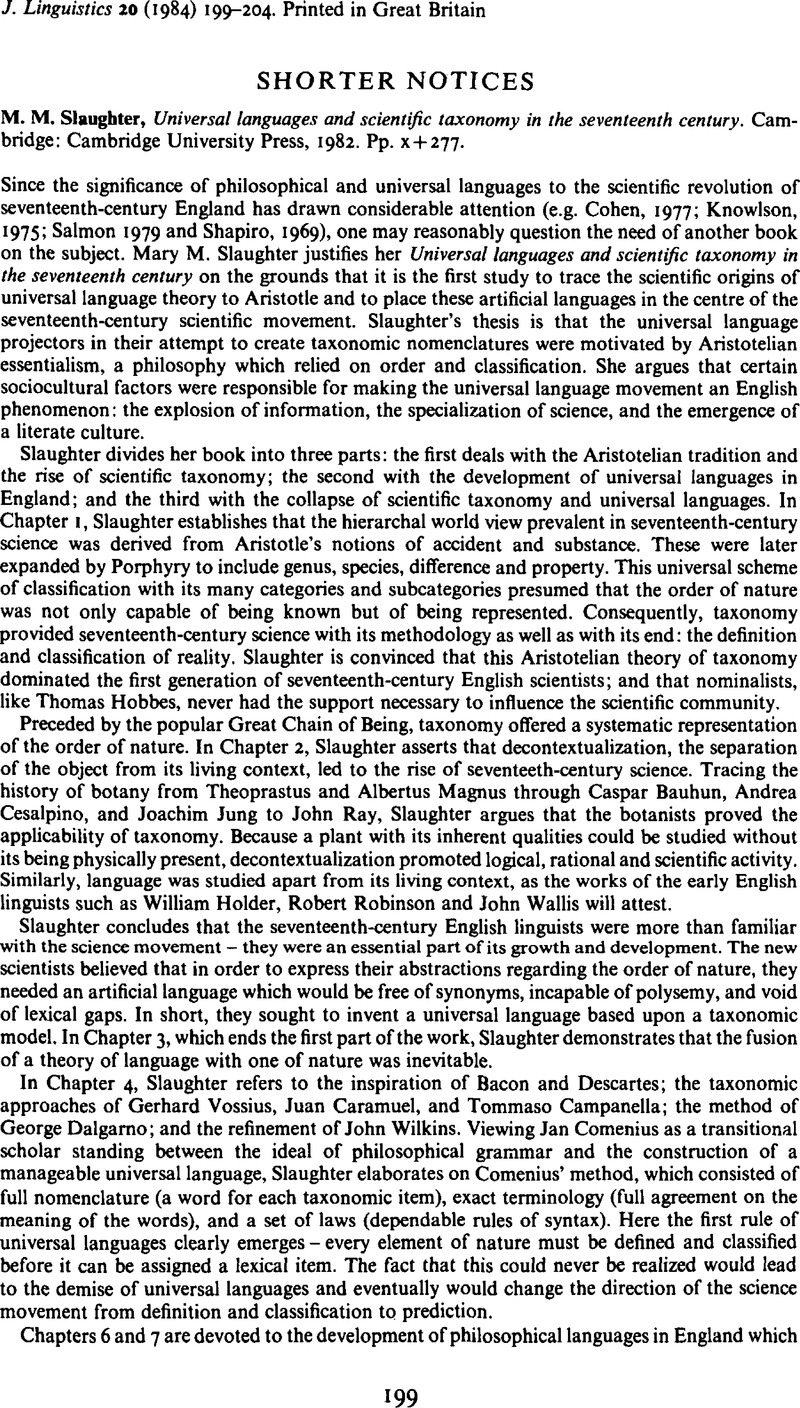No CrossRef data available.
Article contents
M. M. Slaughter, Universal languages and scientific taxonomy in the seventeenth century. Cambridge: Cambridge University Press, 1982. Pp. x+277.
Review products
M. M. Slaughter, Universal languages and scientific taxonomy in the seventeenth century. Cambridge: Cambridge University Press, 1982. Pp. x+277.
Published online by Cambridge University Press: 28 November 2008
Abstract
An abstract is not available for this content so a preview has been provided. Please use the Get access link above for information on how to access this content.

- Type
- Shorter Notices
- Information
- Copyright
- Copyright © Cambridge University Press 1984
References
REFERENCES
Andrade, C. N. da C. (1936). The real character of Bishop Wilkins. Annals of Science I, 4–12.CrossRefGoogle Scholar
Cohen, M. (1977). Sensible words: linguistic practice in England 1640–1785. Baltimore: Johns Hopkins University Press.Google Scholar
Foucault, M. (1970). The order of things: an archaeology of the human sciences. New York: Pantheon Books.Google Scholar
Knowlson, J. (1975). Universal language schemes in England and France 1600–1800. Toronto: University of Toronto Press.CrossRefGoogle Scholar
Purver, M. (1967). The Royal Society: concept and creation. Cambridge, Mass.: M.I.T. Press.Google Scholar
Salmon, V. (1979). The study of language in 17th-century England. Amsterdam: John Benjamins.Google Scholar
Syfert, R. H. (1948). The origins of the Royal Society. Notes and Records of the Royal Society 5, 75–137.Google Scholar


